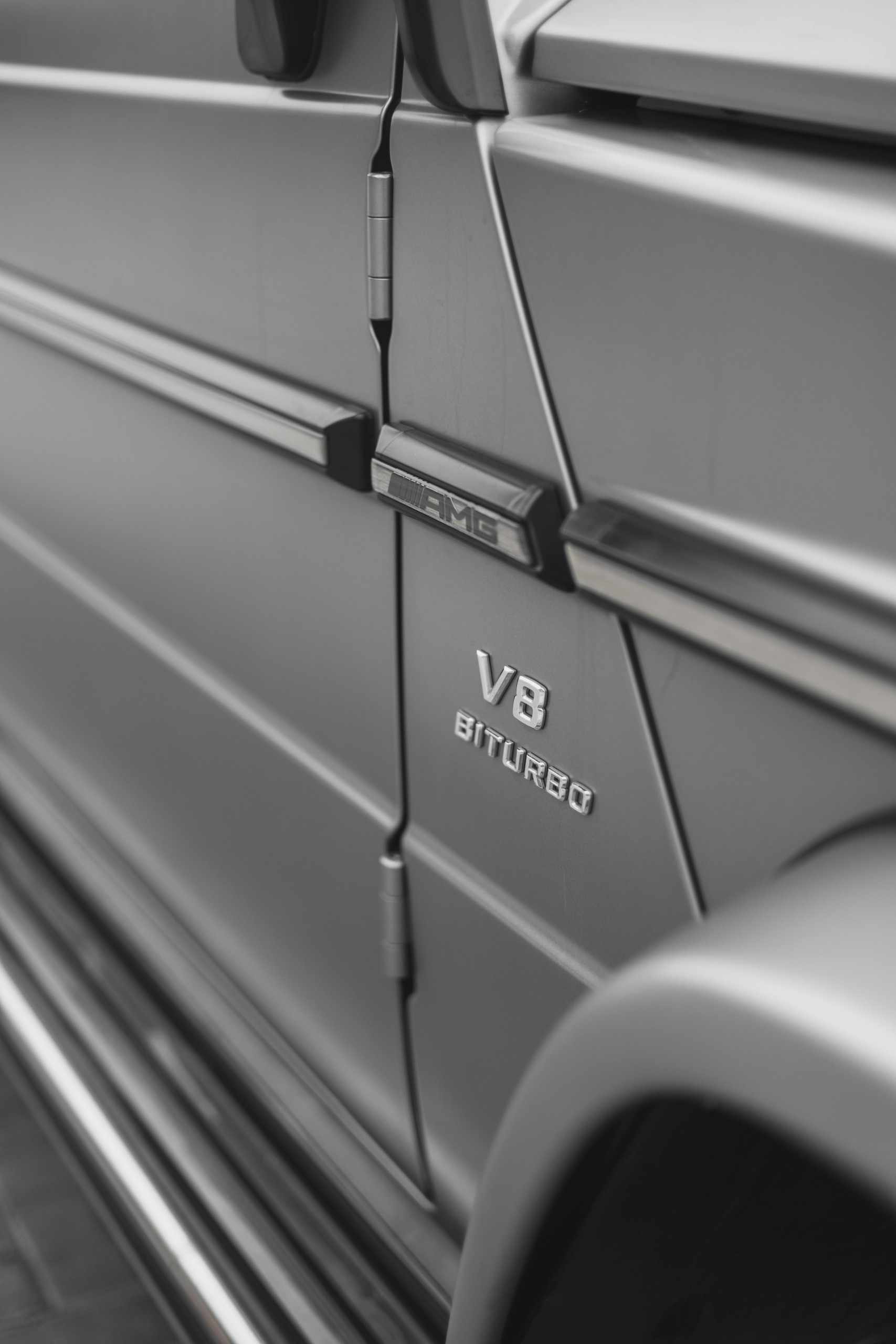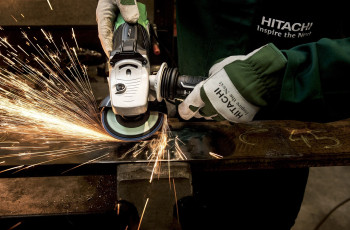If you’re a car enthusiast or a professional mechanic, then you know the importance of having the right tools at your disposal. One tool that can make a world of difference in automotive repair and restoration is the electric die grinder. This versatile and powerful tool is designed to make precision cutting, grinding, and polishing tasks a breeze. Whether you’re working on engine parts, body panels, or any other automotive component, the electric die grinder can help you achieve professional results with ease. In this article, we will explore the various ways in which you can utilize this tool to enhance your automotive repair and restoration projects.

Benefits of Electric Die Grinders
Increased efficiency and productivity
Electric die grinders are powerful tools that can significantly increase the efficiency and productivity of automotive repair and restoration tasks. With their high-speed rotation, they can quickly and effortlessly remove rust, paint, and other surface imperfections. This saves you valuable time and allows you to complete your projects in a timely manner.
Versatility in applications
One of the biggest advantages of electric die grinders is their versatility in various applications. They can be used for a wide range of tasks, including surface preparation, deburring, edge smoothing, grinding, shaping, polishing, and buffing. Whether you are working on small or large automotive parts, an electric die grinder can handle the job with precision and ease.
Precision and control
Electric die grinders offer exceptional precision and control, allowing you to achieve the desired results with accuracy. Their compact size and ergonomic design make it easy to maneuver in tight spaces and hard-to-reach areas. This level of control is especially important when you are working on delicate automotive parts that require delicate touches.
Reduced physical effort
With an electric die grinder, you can say goodbye to manual grinding and polishing, which often require significant physical effort. The power and speed of electric die grinders eliminate the need for excessive force, minimizing fatigue and strain on your hands and wrists. This not only makes the job more comfortable but also reduces the risk of repetitive strain injuries.
Types of Electric Die Grinders
Straight Die Grinders
Straight die grinders, also known as inline die grinders, have a straight shaft and are ideal for tasks that require precision and access to tight spaces. Their slim design allows for easy maneuverability and control, making them suitable for intricate automotive repair work. Straight die grinders often come with various collet sizes to accommodate different accessories.
Right Angle Die Grinders
Right angle die grinders, also known as angled die grinders, feature a head that is set at a 90-degree angle to the body. This design allows for better access to hard-to-reach areas and provides more torque for heavy-duty tasks. Right angle die grinders are commonly used in automotive repair and restoration projects that require grinding, shaping, and polishing larger surfaces.
Features and Specifications
Motor power and speed
The motor power and speed of an electric die grinder are crucial factors to consider. Higher motor power allows for more efficient and aggressive grinding, while variable speed options provide flexibility for different applications. It is important to choose an electric die grinder with a motor power and speed suitable for your specific automotive repair and restoration needs.
Collet size
The collet size of an electric die grinder is the diameter of the opening that holds the accessories. It is essential to ensure that the collet size matches the accessories you plan to use. Common collet sizes for electric die grinders are 1/4 inch and 1/8 inch, although other sizes may be available depending on the model.
Ergonomics
The ergonomics of an electric die grinder play a significant role in user comfort and control. Look for features such as rubberized grips and ergonomic handles that minimize hand fatigue and provide a comfortable grip during extended use. Additionally, consider the placement of the power switch and any adjustable features that enhance the overall usability of the tool.
Weight and size
The weight and size of an electric die grinder can impact both comfort and maneuverability. While a lighter and more compact grinder may be easier to handle, it is essential to find a balance between size and power. Consider the type of automotive repair and restoration tasks you will be performing, and choose an electric die grinder that suits your specific needs.
Corded vs Cordless
When choosing an electric die grinder, you will have the option of selecting a corded or cordless model. Corded die grinders offer consistent power and unlimited runtime, making them suitable for longer projects. Cordless die grinders provide greater mobility and flexibility, allowing you to work in areas without access to electrical outlets. Consider your specific needs and preferences when deciding between corded and cordless options.
Common Automotive Repair and Restoration Tasks
Surface preparation
Before painting or applying protective coatings to automotive parts, proper surface preparation is crucial. Electric die grinders can quickly remove corrosion, old paint, and surface imperfections, ensuring a clean and smooth surface for further treatment.
Deburring and edge smoothing
In automotive repair and restoration, deburring and edge smoothing are often necessary to eliminate sharp edges and rough surfaces. Electric die grinders equipped with appropriate grinding accessories can easily remove burrs and smooth out edges, improving both safety and aesthetic appeal.
Rust and paint removal
Rust and paint removal are common tasks in automotive repair and restoration. Electric die grinders with grinding wheels or wire brushes can efficiently remove rust and old paint, preparing the surface for subsequent treatments and preventing further corrosion.
Grinding and shaping
Whether you need to reshape body panels or adjust automotive parts for a perfect fit, electric die grinders are invaluable tools for grinding and shaping tasks. Their high-speed rotation and precision enable you to achieve precise cuts and smooth contours.
Polishing and buffing
To achieve a flawless, mirror-like finish on automotive surfaces, polishing and buffing are essential. By attaching polishing pads to electric die grinders, you can easily remove swirl marks, fine scratches, and other imperfections, leaving your vehicle looking shiny and new.

Choosing the Right Accessories
Grinding stones and wheels
Grinding stones and wheels come in various shapes and sizes, and they are designed for different applications. For removing rust and paint, abrasive grinding stones with coarse grits are suitable. Finer grit grinding stones are ideal for creating smooth finishes and contours.
Wire brushes
Wire brushes are commonly used for heavy-duty cleaning, rust removal, and deburring. They are available in different types, including stainless steel, brass, and nylon. Choose the appropriate wire brush for your specific task and ensure it is compatible with your electric die grinder.
Sanding discs
Sanding discs are used for smoothing and blending automotive surfaces. They are available in different grits, and finer grits are usually used for achieving a smooth finish. Ensure the sanding discs you choose are compatible with your electric die grinder’s collet size.
Polishing pads
Polishing pads come in various materials and densities, and they are used for achieving a high gloss finish on automotive surfaces. Foam polishing pads are commonly used, but wool pads are suitable for more aggressive cutting and polishing tasks.
Cut-off wheels
Cut-off wheels are used for precise cutting of metal, such as removing bolts, trimming sheet metal, or slicing through exhaust pipes. Choose a cut-off wheel that is compatible with your electric die grinder and suitable for the material you are cutting.
Safety Considerations
Wearing protective gear
When using an electric die grinder for automotive repair and restoration, it is essential to wear appropriate protective gear. This includes safety glasses or goggles to protect your eyes from flying debris, a dust mask to prevent inhaling dust particles, and gloves to protect your hands from sharp edges and hot surfaces.
Proper workspace setup
Ensure your workspace is well-ventilated and free from clutter. Clear the area of any unnecessary objects or debris that may interfere with your work or cause accidents. Provide adequate lighting to ensure visibility and minimize the risk of mistakes or injuries.
Securing the workpiece
When using an electric die grinder, always make sure your workpiece is securely held in place. Unsecured or loosely held workpieces can shift or spin during grinding, posing a safety risk. Use clamps, vises, or other appropriate methods to ensure the stability of your workpiece.
Avoiding overheating
During prolonged use, electric die grinders can generate heat. To prevent overheating, avoid pressing the grinder against the workpiece with excessive force. Allow the tool to cool down if it becomes too hot to touch. Overheating can damage the tool and may pose a safety risk.
Using the tool correctly
Follow the manufacturer’s instructions and guidelines for operating the electric die grinder. Ensure you are using the correct accessories for the task at hand. Do not force the tool or use excessive pressure, as this can cause damage and compromise your safety. Always maintain a firm grip and control over the grinder during operation.

Maintenance and Care
Regular cleaning and lubrication
To prolong the life of your electric die grinder, it is important to clean and lubricate it regularly. Remove any dust, debris, or buildup from the tool, paying attention to the motor vents and air intake areas. Use a soft brush or compressed air to remove particles. Apply a small amount of lubricating oil to the moving parts as recommended by the manufacturer.
Inspecting and replacing worn parts
Regularly inspect your electric die grinder for any worn or damaged parts. Check the power cord for fraying or exposed wires and replace if necessary. Inspect the grinding accessories for signs of wear, such as worn-out bristles or excessive wear on grinding stones. Replace any worn or damaged parts to ensure optimal performance and safety.
Storing the tool properly
When not in use, store your electric die grinder in a clean and dry place. Ensure it is protected from dust, moisture, and extreme temperatures. Use the designated storage case or pouch, if provided, to keep the tool and its accessories organized and secure.
Tips for Effective Use
Start with a lower speed
When beginning a task with your electric die grinder, start with a lower speed and gradually increase it as needed. This allows you to have better control over the tool and reduces the risk of accidentally removing too much material or causing damage.
Gradually increase pressure
For grinding or shaping tasks, apply gradual pressure to the workpiece. Avoid using excessive force or pushing too hard, as this can lead to an uneven or inconsistent finish. Let the grinder do the work and allow the abrasive accessory to remove the material at its own pace.
Move the grinder in the right direction
When using the electric die grinder, always move it in the right direction to achieve the desired results. Follow the grain or contours of the workpiece, and avoid grinding against the natural flow. This helps to prevent accidental gouging, scratching, or uneven surfaces.
Use short bursts for heavy grinding tasks
For heavy grinding tasks, such as rust removal or metal shaping, use short bursts of grinding instead of prolonged continuous grinding. This prevents the grinder from overheating and allows you to maintain better control over the tool. Take breaks as needed to prevent fatigue and ensure accuracy.
Common Troubleshooting Issues
Loss of power or speed
If your electric die grinder experiences a loss of power or speed, check the power source or battery if using a cordless model. Ensure the power cord is securely plugged in or the battery is fully charged. If the issue persists, consult the manufacturer’s troubleshooting guide or contact customer support for further assistance.
Excessive vibration
Excessive vibration during tool operation can be a sign of an unbalanced accessory or worn bearings. Inspect the grinding accessories for any signs of damage or imbalance. If the issue persists, stop using the tool and have it inspected by a professional or contact the manufacturer for guidance.
Sparks or unusual noise
If you notice sparks or unusual noise coming from the electric die grinder, immediately stop using the tool and investigate the cause. Sparks can indicate a faulty electrical connection or worn brushes. Unusual noise could be a sign of a loose part or damaged gear. To ensure your safety, have the tool inspected and repaired by a professional if necessary.
Conclusion
Electric die grinders are invaluable tools for automotive repair and restoration tasks, providing increased efficiency, precision, and versatility. By understanding their features, selecting the appropriate accessories, and following safety guidelines, you can make the most out of these powerful tools. Regular maintenance and proper care will ensure their longevity and optimal performance, allowing you to achieve professional results in your automotive projects.



